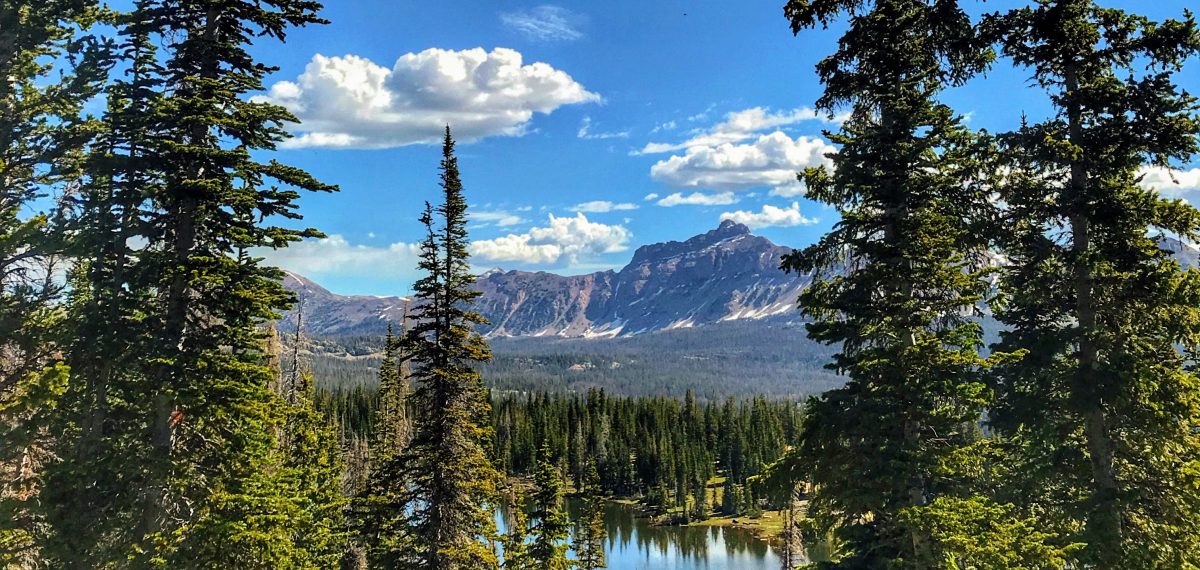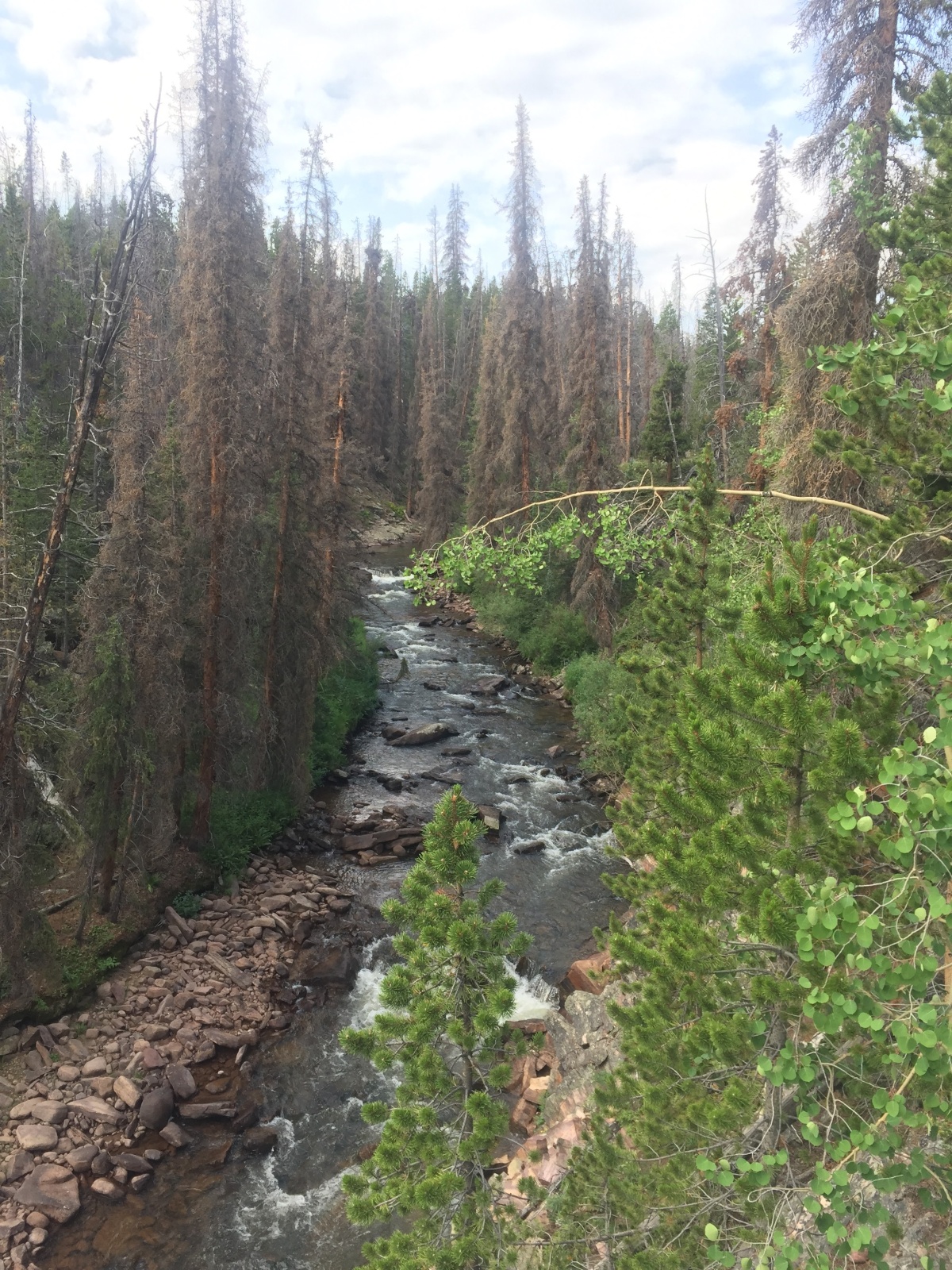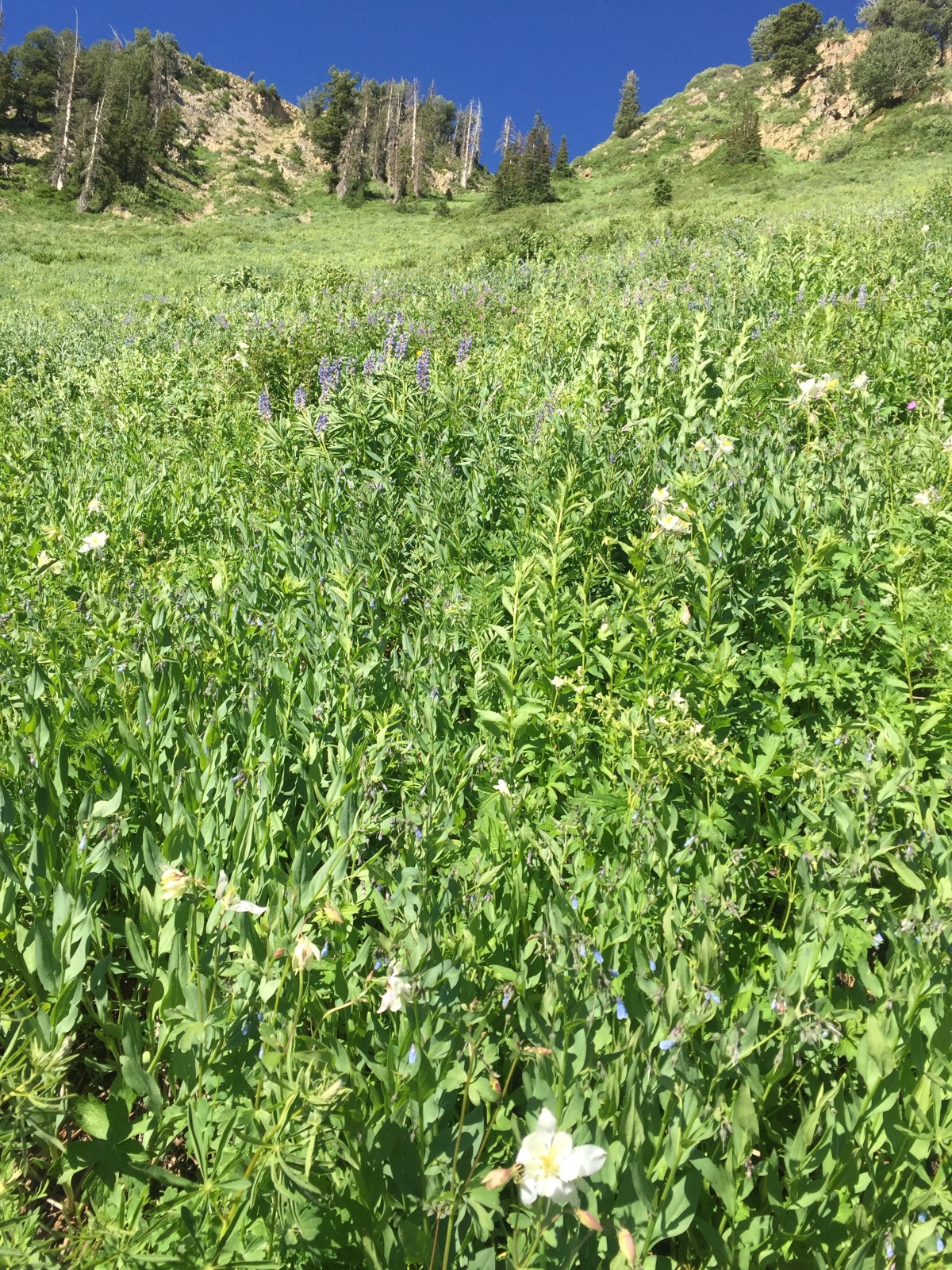A little while ago I traveled with my wife, my younger brother, and some of my wife’s family to the Kolob Canyon section of Zion National Park. Our most substantial hike was through Taylor’s Creek, a 5 mile out-and-back hike to a spectacular double arch. On our way back the sky, formerly clear and blue, was obscured by (in my amateur estimation) cirrostratus clouds that framed the day and the landscape in an “atemporal” light. For without the direct play of the sunlight, the afternoon was bathed in a neutral light. It seemed like there was no passing of time. It stood absolutely still. All that existed was the stunning landscape. It existed unto itself in that lingering moment, a moment that seemed to have no relationship to time.
The soaring red pillars of rock, smoothed and cut through the ages made no attempt to apologize for their unavoidability. They did not ask to be seen, but they could not be unseen. On the meandering trail back we criss-crossed Taylor Creek, which in some spots was frozen and in other flowed clear and unobstructed. In the seemingly eternal afternoon the earth’s beauty was the only thing to behold. The junipers, the pines, the snakegrass, the haunting call of a passing raven were each and all anchored to this timeless moment. If you had isolated and deconstructed every part of the landscape, and every single thing living and partaking of it, the singular wonder of each specimen would be spectacular, yet, when combined into their constituent whole it is self-evident that the harmony, the beauty of it, is greater than the sum of its individual parts.
These and other intermittently more or less pretentious thoughts passed through my mind as we made our way back to the trail-head. Now, as I sit at my computer trying to summon the words necessary to convey a bit of the feeling, the experience, of walking through this place, all the possible words or phrases seem like not quite enough. Why do we even attempt to capture, even for just a fleeting moment, the experience of being in nature? For being in nature seems to speak as much to the unconscious or instinctual as it does to the cultivated and cultured. In writing about our experiences in nature we may try to put words to the former, and are often limited in our ability to express these fully as our articulation is framed by the latter. Writing of nature seems to be a paradox, an attempt to put words to feelings and even flashes of feelings that sometimes never even took the shape of rational thought or coherent expression.
In any case, this writing of nature, while sitting in my bed (and intermittently in my drab office space with the gleam of the afternoon sun dappling my comptuer screen) with only the low hum of my computer fan and the higher shhh of cars passing along the wet road outside our apartment window, progresses as slowly and awkwardly as the attempt to summon the feelings and thoughts that flow so easily when stepping on pine needles and over burbling creeks. And it is tempting to search for a nimble turn of phrase or glinting sentence that would distract the attention of the reader from the experience by overshadowing it with my own experiencing of it, which is yet another tension in writing of these things. For any person’s experience in nature is uniquely their own, but it does not belong to them. It is a gift, and an ephemeral one at that. The challenge is to make it personal enough to reflect its reality, but not too personal in a way that would seem to take ownership of, or establish any pretended relationship with, what is cannot be, and is not, one’s own.
And there are even further complications in defining the subject of such writing. What is nature if some aspect of it is always present? How can such a label create any meaningful distinction? These complications seem to require us to expand our view of what nature is. Although I believe we all need some untrammeled wilderness for our collective spiritual renewal and sanity, most of the world could not be defined that way. If we continue to narrow our definition of nature we will push it farther and farther beyond our reach. And most tragically, we will miss the imperfect beauty around us. For the natural world, and its persistence, will always be around us. At times it will be buried beneath concrete, obscured by power lines, bulldozed by roads, and hidden behind fences–but still it continues. They are the small signs of renewal and hope all around us. Though they do not excuse the often wanton destruction and thoughtless development, their existence is an easily missed symbol of redemption and persistence.
Just a few days ago four or five thirty-foot tall maple trees that stood across the street from our apartment were cut down and ground up into wood chips to make way for large trucks and tools to be used to lay the cement for the road they were working on. I knew it was coming but that didn’t make the inevitable any less melancholy. As I left for work that morning I saw the men with their chainsaws, their large truck, and their grinder for the logs and the branches. Each of these trees had a orange “x” spray-painted on the trunks facing the road, and as I left I saw the trees standing one last time, defiantly and hopelessly all at once. These melancholy situations could invite resignation or a feeling of powerlessness, and there are countless acts of mundane and trivial callousness inflicted on the natural world around us that go unreported and unrecognized. Nonetheless, that is not the message that reverberates in the soul, that one takes home, after each fleeting encounter with the natural world. Every weekday I bike to work along the Provo River Trail. It is a hidden gem tucked behind a Macey’s, a Target, and a used car lot. It is far from untrammeled wilderness. It is crossed numerous times by bridges and bounded by only a narrow stretch of trees and brush on each side. But it is more than enough each morning and late afternoon that I pass by it. The water flows quickly but calmly and I frequently catch sight of a duck or two bobbing in the steady current. One of my favorite spots is at a slight bend in the river where the water rushes over a rock on one side of the river and then cascades down on the other side creating a beautiful mix of white, blue, and dark green, along with small pockets of air bubbles, all dappled by the sun’s rays. It is in those quiet moments that nature’s grace seems to flows most abundantly.









